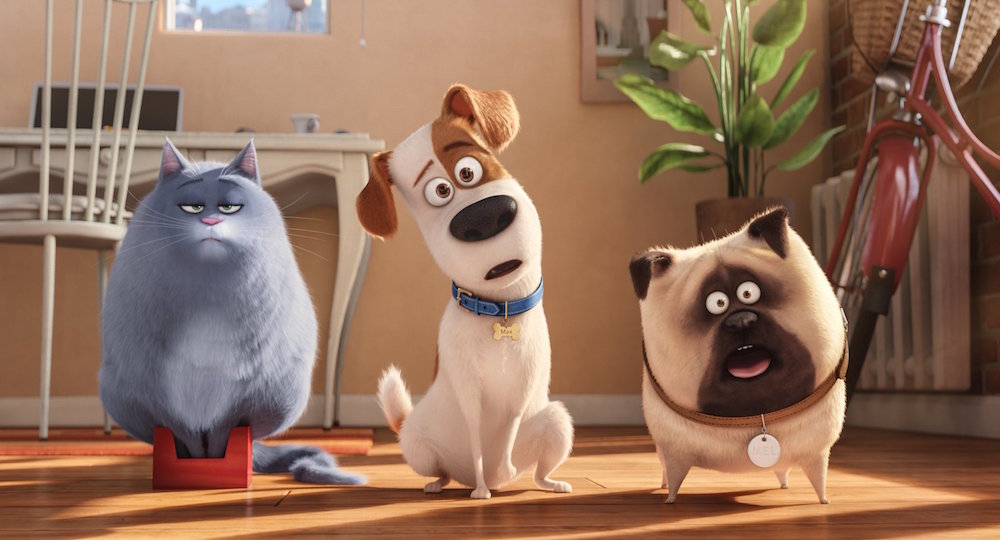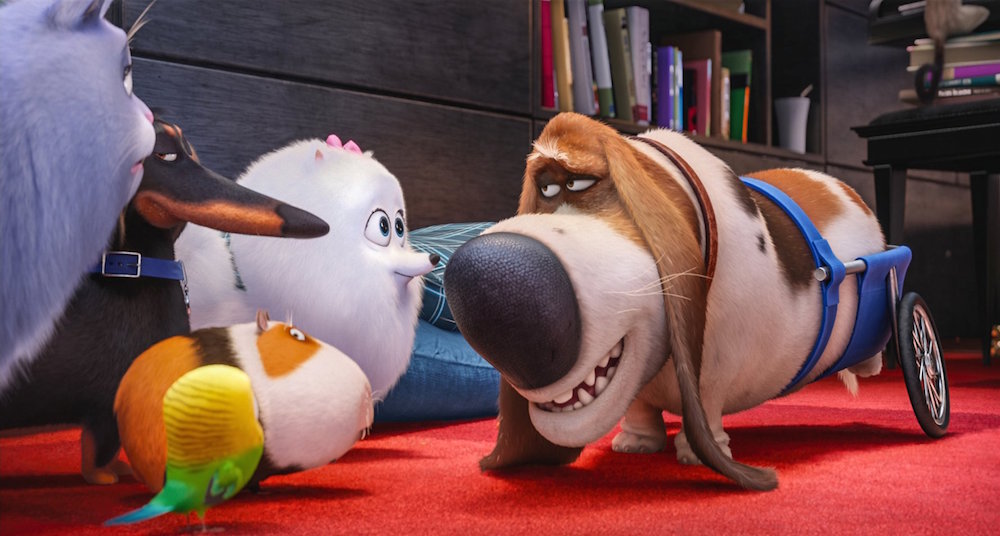Do Pets Really Have Secret Lives?

Fluffy and Fido may not party it up when you're away, as the spoiled terrier Max in the summer blockbuster "The Secret Life of Pets" would have you think. But that's not to say your pets live a dull, snoozeworthy existence when you head out.
It's true, most pets sleep a lot when their owners aren't at home, but that's not all they do, one expert told Live Science.
Though little research seems to have focused on this "secret life of pets," the studies that have been completed suggest some cats can roam far and wide, checking out all kinds of outdoor spaces. As for dogs, there's a chance they are pining away for human companionship, but that can be assuaged with toys and training. [10 Surprising Facts About Dogs]
Sleep signals activity
A long snooze may signal your dog has gotten the activity it needs, said Anne Carter, a senior lecturer in animal science at Nottingham Trent University in England.
"We often tend to see focus on the negative aspects of being left alone," Carter told Live Science in an email. But when a dog sleeps, that often signifies that it has been exercised sufficiently, both mentally and physically, Carter said.
Still, waving goodbye to a pooch doesn't always go well, especially if the dog has separation anxiety. In such a situation, your usually calm canine might go a little wild, barking and soiling the house, for instance, she said.
"But this can be worked on with a behaviorist," Carter said. Also, owners can practice leaving the dog alone (often, by gradually building up the time away, she said) so that, eventually, the dog will feel comfortable spending a few hours alone.
Sign up for the Live Science daily newsletter now
Get the world’s most fascinating discoveries delivered straight to your inbox.
Pet owners can also use pet cameras to figure out whether Fido is distressed for hours after they leave. That way, owners can think of ways to help the animal cope. It also provides insight into what animals do all day, besides sleeping, that is.
"Maybe they like to look out the window," Carter said.
Feline adventures
Cats tend to be more independent than dogs. So they will explore the outdoors when allowed.
"A cat flap allows them to come and go as they please and explore their territory," Carter said. "When a number of cats occupy the same neighborhood, they may vary the time that they go out to be able to share the area without conflict."
Stray cats also roam, but stay relatively close to man-made structures, a 2011 study in the journal Wildlife Management found. After tracking 42 outdoor pet cats and stray cats with radio collars for two years, researchers learned that the cats had surprisingly large territories. One stray, male cat had a home range of 1,351 acres (2.1 square miles) that included urban, rural, residential, agricultural, forest and prairie areas in Illinois, Live Science reported.
Moreover, the pet cats ran or stalked only about 3 percent of the time, whereas the strays engaged in vigorous activity 14 percent of the time, likely because they had to hunt to stay alive, the researchers said.
But even pet cats, especially indoor felines, often while away the hours with a good catnap.
"We want our pets not to be stressed when we are out," she said. "If they are sleeping when we are out, it is a good sign that they are content and not anxious about being left alone." [The 10 Most Popular Dog Breeds]
But when an owner returns, it's important to engage with the pet, whether that includes playing tug-of-war, fetch or going on walks with a dog, or helping a cat play with ribbons or other toys that let it stalk and pounce, Carter said.
Star pets
Some of the animals in "The Secret Life of Pets" could have used more of this human interaction, Carter said. (Caution: spoilers ahead.)
Max, the star of the movie, "really missed his owner (Katie) when she was out," Carter said.
But when Katie gets a new dog, Max doesn't get along with him. Eventually, "social companionship helped him to deal with his separation anxiety once they developed a good relationship" — but in reality, "getting another dog isnꞌt a quick-fix solution to separation anxiety," Carter said.

She noted that the fluffy white dog Gidget was "a very happy, social dog," whereas the pug Mel "was a little hyperactive and squirrel-obsessed, and perhaps needed some more exercise and games when his owner was home."
Mel's owner could have helped by leaving him some brainteasers in the form of toys. For instance, taking some of a dog's breakfast and putting it in a Kong (a rubber dog toy) entices the dog to figure out how to extricate the treat, she said.
"Freezing it can make it last even longer," Carter recommended.
For cats, owners can provide scratching posts and balls filled with dry food, she said. Even leaving the radio on, "particularly talk-based or calming music" can help pets settle, and help mask any outside noises," she said.
The movie took some artistic license with the nefarious bunny Snowball, Carter said. However, she added that even conspiring bunnies need space and enrichment, "not just a hutch."
Original article on Live Science.

Laura is the archaeology and Life's Little Mysteries editor at Live Science. She also reports on general science, including paleontology. Her work has appeared in The New York Times, Scholastic, Popular Science and Spectrum, a site on autism research. She has won multiple awards from the Society of Professional Journalists and the Washington Newspaper Publishers Association for her reporting at a weekly newspaper near Seattle. Laura holds a bachelor's degree in English literature and psychology from Washington University in St. Louis and a master's degree in science writing from NYU.










